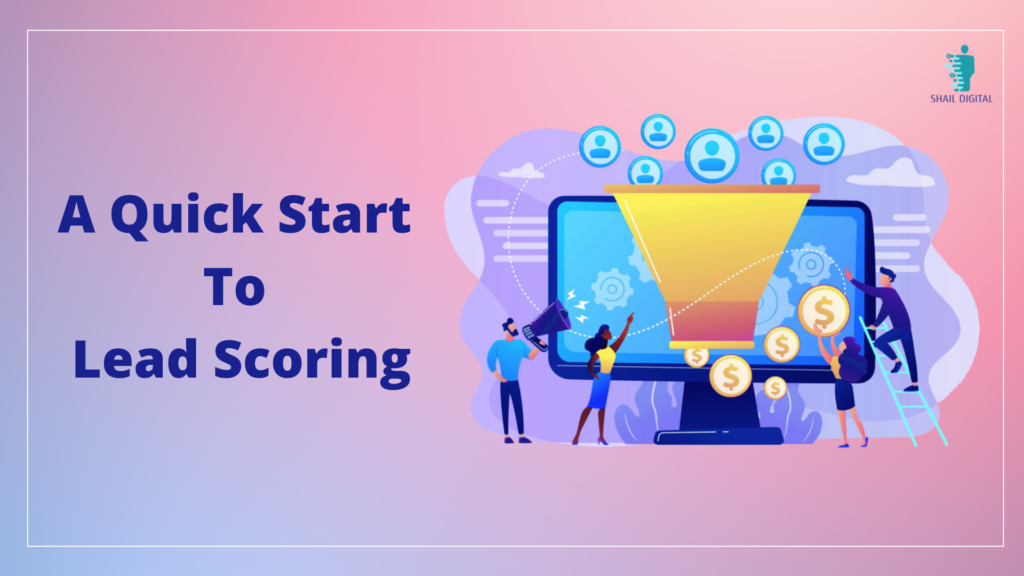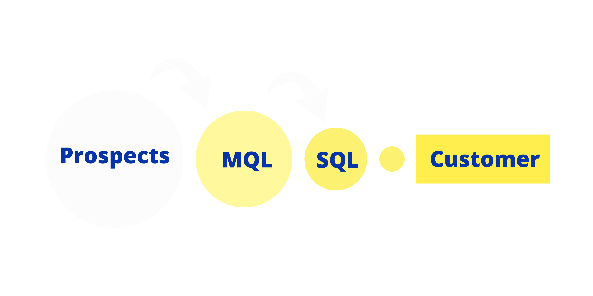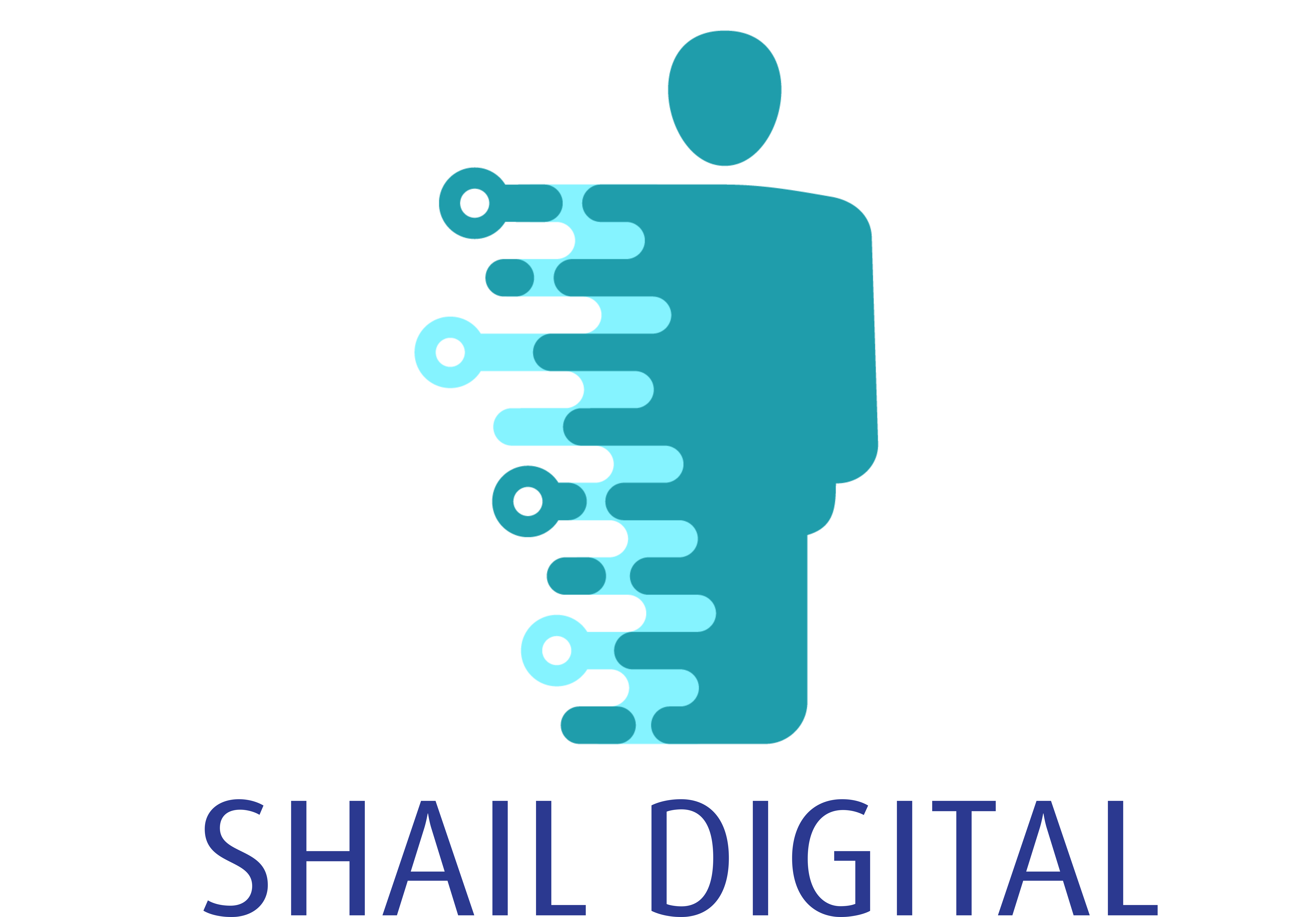A Quick Start To Lead Scoring

Lead generation is the core marketing function of any business. Every lead generated through different efforts may not be of the same value. Thus, marketers use lead scoring methods to qualify the leads and prospects collected from various marketing channels. If you are not using it yet, here’s a quick start guide to lead scoring.
Before we begin with lead scoring models, let’s understand what it means.
What is Lead Scoring and Why is it important?
In the lead scoring process, each prospect or lead is given a numerical value for each matching criteria with the ideal target audience. The scores are given for demographic information, actions taken by the lead, website interactions, mobile application engagement etc. Based on the score, the lead is either qualified as marketing lead or sales lead or rejected from further follow-up. Thus, this helps marketers to differentiate serious leads from a false inquiry or just a website click.
Lead scoring empowers sales and marketing teams to focus on the most important opportunities and close more deals. It also helps in understanding the types of leads they should draw in more. An effective and reliable lead scoring model thus helps to identify strong likely buyers consistently.
How To Start Lead Scoring?
Scoring criteria varies from business to business. The ultimate goal is that the lead ranking system should measure the interest and quality of each prospect to determine whether they convert into customers or not.
As a beginner, one can start to score each lead based on the demographics, behaviour and interests. The variables can then be combined into a formula that can be used to create a lead score.
Lead Scoring Models
To use lead scoring models, organisations need data from account histories and activity logs to identify the characteristics and behaviours of prospects. Lead scoring models ensure that the values assigned to each prospect are compatible with the actual product and that they are likely to convert.
Implicit Scoring
Implicit Score refers to the score awarded to a lead based on their interactions/behaviour.

Demographic Score
If the purchase of a product or service is driven by specific demographic information such as age, gender, designation/ title, and location, then, demographic scoring becomes crucial.
For example, if a brand sells products in specific areas, we might receive an inquiry that is outside the serviceable region. We can give a negative score to that particular brand.
Email Engagement
Email automation workflow is a great way to qualify a lead. When a prospect goes ahead in the workflow, crossing all the qualification stages, he becomes a more targeted lead. Keeping track of the open and click actions can help identify the interest of the prospects.
For example, a contact who opens and clicks on a demo-request email may have a higher point value than a contact who opens a newsletter. Because a prospect who requests a demo is closer to making a purchase decision.
Website User Behaviour
Website is one of the most important indicators of how close a prospect is to making a purchase decision. Here are a few methods for scoring leads based on their website activities:
- How many pages did they visit? How long did they spend on each?
- Did they go to any high-value pages, such as the pricing or demo pages?
- Did they submit any form?
Allocate the points to each of these assessments to better categorise the sales funnel level.
Negative Scoring
Negative scores play an important role in maintaining your list hygiene. It should be assigned to leads who have been inactive for an extended period or leads who stopped engaging with the website. The reason could be a change of prospect interest, deals closed with other providers like you or even in some cases, a change of lead’s employment.
Threshold Score
A lead scoring threshold is the point value at which a prospect is considered sales-ready. When a lead’s score reaches or exceeds this point, they become a marketing qualified lead (MQL). And sales team will receive that lead from the marketing team.
Setting the right threshold score is very crucial and usually requires historical data analysis.
The Journey from the Prospects to the Customers

Prospects
A prospect is a contact – a company or a person, likely to become a potential customer. It is just a contact who needs to be fed with the product/ service information. So that, it is easy to track his behaviour. He can then be assigned a score, the higher the score closer he moves in the qualification process to become a marketing qualified lead.
Marketing Qualified Leads
A marketing-qualified lead (MQL) is vetted by the marketing team based on certain criteria. The engagement data and the creation of MQL criteria are crucial for both marketing and sales. It’s how the marketing team can efficiently filter those prospects to identify good quality leads.
Sales Qualified Leads
A sales qualified lead is a potential customer who is ready to speak with a sales representative. If this lead has shown enough interest in the product or service, they are so likely ready to move forward in the sales process. Consider the following factors when moving a lead from MQL to SQL:
- Lead Score
- Lead Behaviour
- Likelihood to buy
Customer
The higher a lead’s score, the closer they are to becoming a customer. The score and criteria are something that needs to tweak along the way until finding the formula that works. Because this will transform the qualified SQL into a customer.
It is an interesting fact that a current customer with a high lead score can act as a prospect for another product or service and re-enter the funnel and lead scoring model.
In Nutshell
When it comes to following up with prospects and using prospecting tools for sales, lead scoring helps sales representatives to work smarter, not harder. Focusing entirely on qualified leads saves a lot of time and stress from trying to contact and convert prospects who aren’t ready. It has the potential to increase the bottom line and generate more value for the business.


Recent Comments